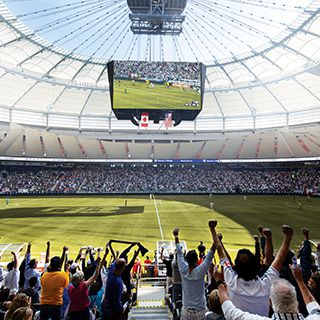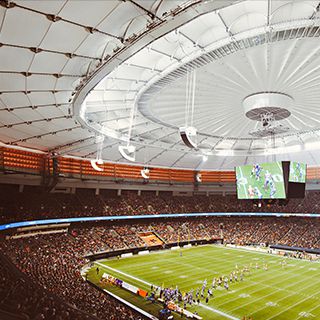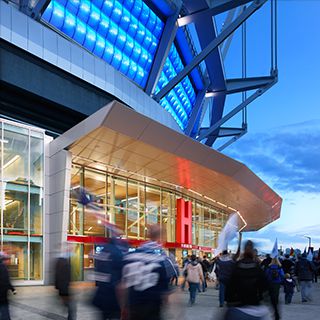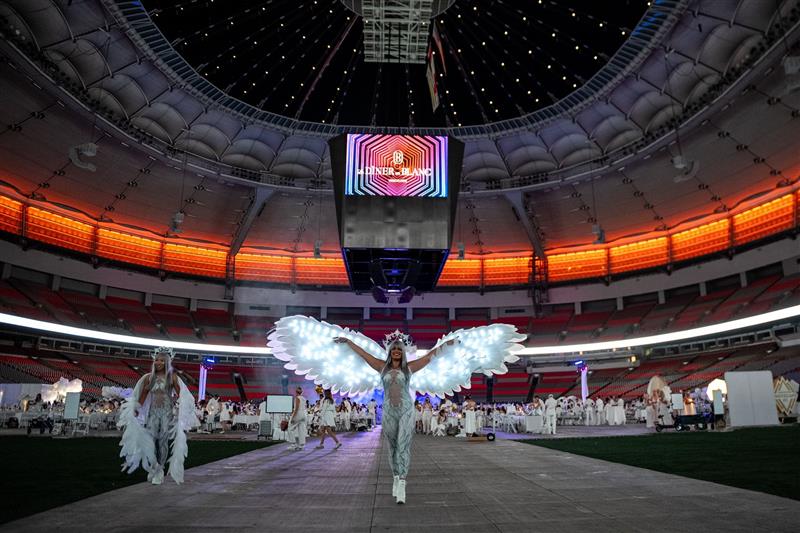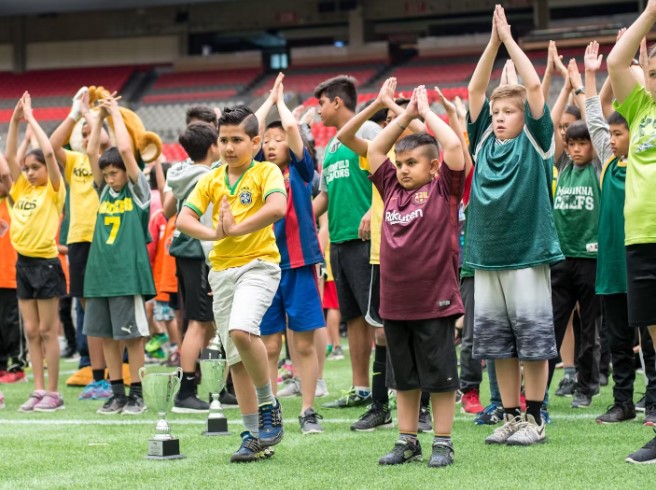
BC Place is recognized around the world as a landmark of Vancouver’s skyline and a place of pride for all British Columbians.
The lights outside of the venue – notably named “The Northern Lights Display” has been used to create the world’s largest Union Jack to welcome Sir Paul McCartney, a giant poppy to recognize Canada’s Veterans, and for countless events and charitable causes that have a positive impact in our community.
BC Place is illuminated from sunset to 11pm on most nights.
